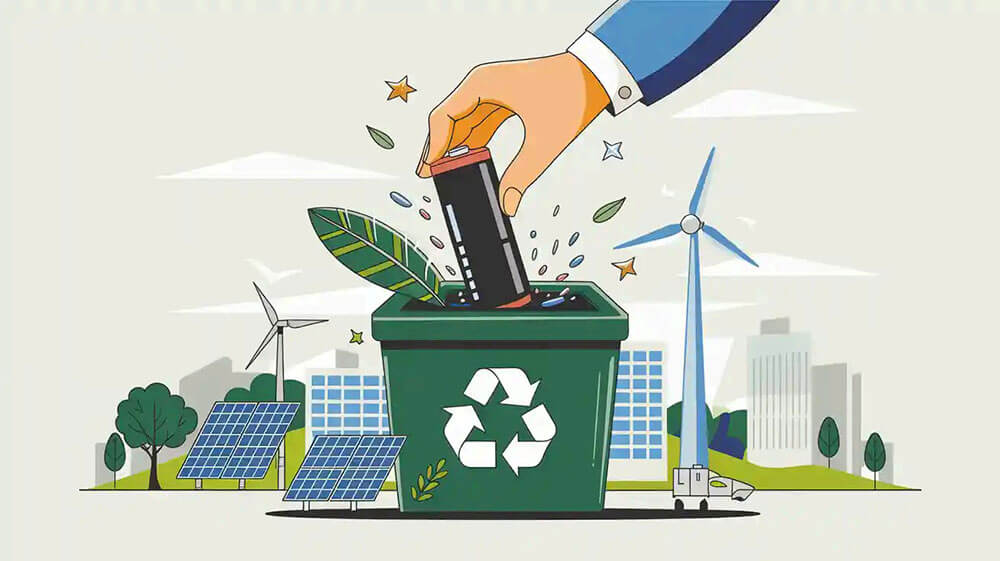Contents

Safe lithium-ion batteries are essential for the many devices you use daily. While these batteries power everything from small gadgets to electric cars, they can pose risks if not handled properly. Fires or explosions may occur, potentially causing harm. In the U.S., approximately 2,000 lithium-ion battery fires are reported annually, with over 3,000 fires and 188 explosions linked to these batteries in various products since 2022.
Issues like overheating or damage can lead to a condition called thermal runaway, significantly increasing the risk of fire. The danger becomes greater when safety guidelines are ignored. Research shows that 45% of people overcharge their batteries, and many fail to inspect them for damage. By prioritizing the use of safe lithium-ion batteries and following proper precautions, you can reduce the risk of fires and ensure your safety. Staying vigilant and informed is the key to maintaining battery safety.
Follow Proper Charging Rules
Use Chargers Made by the Manufacturer
Always use chargers made for your battery by the manufacturer. These chargers are built to match the battery’s needs, keeping it safe. Using fake or third-party chargers can cause problems like overheating or fires. Reports show that non-approved chargers can break batteries and cause fires. Stick to chargers made by the company and never change them to stay safe.
Don’t Overcharge or Charge Overnight
Overcharging is a big reason why batteries catch fire. Leaving a battery plugged in after it’s full can make it too hot. This heat can cause the battery to burn or explode. Many house fires happen because people leave batteries charging all night. To stop this, unplug your device when it’s fully charged. Devices with smart charging systems can help stop overcharging.
Charge in a Safe Place with Airflow
Charge your batteries in a safe spot with good airflow. Don’t charge them in closed spaces or near things that can catch fire. Airflow helps cool the battery and stops overheating. Never charge batteries on soft places like beds or couches, as these trap heat. Following these rules will help keep your devices safe.
Regular Checks and Care
Checking and caring for your lithium-ion batteries is important. It helps keep them safe and last longer. By being careful, you can spot problems early and avoid accidents.
Look for Damage or Swelling
Check your batteries often for any signs of damage. Watch for:
Bulging or swelling.
Cracks on the outside.
Leaks or strange liquids.
Odd or burning smells.
If you see any of these, stop using the battery right away. Broken batteries can overheat or catch fire. Take them to a recycling center to throw them away safely and protect the environment.
Change Old or Broken Batteries
Old or broken batteries don’t work well and can be unsafe. Replace them if they stop working well or look damaged. Using a broken battery can cause overheating and fires. Always buy new batteries from trusted brands. Good batteries often have safety features to stop overheating or overcharging.
Clean Battery Connections Regularly
Dirty battery connections can block electricity and cause overheating. Wipe the connections with a dry cloth to clean them. Don’t use water or cleaners, as they can harm the battery. Clean connections help the battery work better and stay safe.
By following these tips, you can keep your batteries safe and working well. Regular care not only makes them last longer but also keeps you and your devices safe from harm.
Use Safe and Good-Quality Batteries
Using safe, high-quality batteries keeps you protected. Batteries from trusted brands lower the chances of overheating, fires, or explosions. Cheap or fake batteries often miss safety features, making them dangerous.
Buy from Reliable Brands
Always get batteries from well-known brands. These companies test their batteries to make sure they are safe. Fake batteries don’t pass safety tests and can be risky.
Trusted brands add safety tools like PTC and CID. These tools stop overheating and short circuits.
Fake batteries can get hotter than 600°C during overcharging, causing fires or explosions.
Choosing reliable brands helps prevent battery accidents.
Stay Away from Fake or Cheap Batteries
Fake batteries might cost less but are unsafe. They often skip safety checks and fail under pressure. For example:
In short circuit tests, fake batteries reached 167°C, causing fires.
Real batteries safely shut down in the same tests.
Only buy batteries from trusted stores or websites. This ensures you get real, safe products.
Check for Safety Labels
Safety labels prove the battery is tested and safe. Look for these labels:
Safety Label | What It Means |
|---|---|
Tests if fire spreads in battery systems. | |
UN 38.3 | Checks if batteries are safe to transport. |
IEC 62133 | Ensures safety for portable batteries. |
These labels show the battery meets strict safety rules. Always check for them before buying.
Buying certified batteries and avoiding fakes keeps you safe. Following safety rules also helps your batteries last longer.
Practice Safe Lithium-Ion Battery Storage
Store in Cool, Dry Places
Keep lithium-ion batteries in cool, dry spots for safety. Heat can make batteries overheat and cause fires. The best storage temperature is 41°F to 68°F (5°C to 20°C). Don’t leave batteries in hot places like cars or near heaters. Cool areas help batteries stay safe and avoid overheating problems.
Tip: Studies show 53% of businesses don’t store batteries properly. This raises fire risks. Always store batteries in the right conditions to stay safe.
Evidence Description | Key Points |
|---|---|
Temperature Control | Cool, dry storage lowers overheating and fire risks. |
Recommended Storage | Best temperature is 41°F–68°F. Avoid hot places. |
Keep Away from Things That Burn
Store batteries far from things that catch fire easily. Items like paper, cloth, or chemicals can burn if a battery overheats. Use fireproof containers to stop fires from spreading.
Benefit | Description |
|---|---|
Fireproof Containers | Hold fires in, stopping them from spreading. |
Temperature Control | Keeps batteries cool to avoid overheating. |
Organized Storage | Helps prevent unsafe handling of batteries. |
Keeping batteries away from flammable items makes your space safer.
Use Cases for Spare Batteries
Protective cases keep spare batteries safe from damage. They stop batteries from getting scratched or overheating. Cases also prevent contact with metal objects like coins or keys, which can cause sparks.
Note: Only use cases made for lithium-ion batteries. These cases give extra safety and protect your batteries better.
By storing batteries the right way, you lower risks and help them last longer. Good storage protects your devices and keeps your home or workplace safe.
Avoid Extreme Temperatures
Extreme heat or cold can damage lithium-ion batteries. This increases the chance of fires or explosions. Keeping batteries safe from these conditions helps them last longer.
Keep Away from Direct Sunlight
Sunlight can make batteries dangerously hot. Don’t leave them in sunny places, on hot surfaces, or in areas with no airflow. Heat speeds up chemical reactions inside, which can cause overheating. Overheating may lead to thermal runaway, where the battery releases flammable gases and risks catching fire.
Tip: Store batteries in cool, shaded spots to avoid overheating.
Stay Away from Freezing Temperatures
Cold weather slows down how batteries work, making them less efficient. Charging in freezing temperatures can cause lithium plating. This creates sharp pieces called dendrites, which may lead to short circuits or fires. Cold also makes it harder for batteries to deliver power.
To keep batteries safe, don’t charge or use them in freezing places. If you need to use them, let them warm up to room temperature first.
Don’t Leave Batteries in Hot Cars
Hot cars can be very dangerous for batteries. Inside a car, temperatures can go over 140°F (60°C) on sunny days. This heat can cause thermal runaway, where the battery gets too hot and might catch fire or explode.
Fact: Thermal runaway happens between 140°F and 212°F. Staying in this range can cause serious damage or fire.
Always take batteries out of your car when parked in the sun. If you can’t, store them in a fireproof container to lower the risk.
By avoiding extreme temperatures, you can keep your batteries working well and stay safe.
Invest in Safety Equipment
Buying safety tools can lower risks with lithium-ion batteries. Using the right equipment helps stop fires and keeps areas safe.
Use Fire-Resistant Cabinets
Fire-resistant cabinets are great for storing batteries safely. They stop fires from spreading and keep batteries in good condition.
Cabinets made with fireproof materials add extra safety.
Some cabinets have temperature controls to keep batteries cool.
Organized storage in these cabinets prevents unsafe handling.
A charging safety cabinet is perfect for homes or workplaces with many batteries. It keeps batteries safe and charges them in one place.
Keep a Fire Extinguisher Nearby
Always have a fire extinguisher near where you store or charge batteries. Special extinguishers, like Class D or multipurpose ones, are needed for battery fires. These can handle the unique chemicals involved. Having one ready helps you act fast in emergencies.
Tip: Learn how to use a fire extinguisher correctly. Acting quickly can stop small fires from growing.
Use Battery Safety Bags for Charging and Storage
Battery safety bags, like LiPo-Guard, help reduce fire risks. These bags are made from fireproof materials to contain flames if a battery fails.
Always charge batteries inside a safety bag.
Never leave charging batteries alone. Stop charging if you see swelling or other issues.
For extra safety, charge batteries outside or in open spaces away from valuables.
When storing batteries, safety bags protect them from damage or overheating. They are especially helpful for spare batteries not being used.
By using these safety tools, you can lower battery risks. These items protect your devices and make your home or workplace safer.
Learn About Lithium-Ion Battery Safety and Fires
Follow Manufacturer Instructions
Manufacturer instructions are key to using batteries safely. These rules help lower risks and keep you safe. Always stick to their advice for charging, storing, and disposing of batteries. For example:
Keep batteries in a cool, dry spot to stop overheating.
Handle batteries gently to avoid breaking them.
Use chargers made by the manufacturer for safety.
Watch charging to prevent overcharging.
Recycle batteries properly and follow local rules.
By following these steps, your batteries will last longer and stay safer.
Teach Others About Battery Safety
Teaching others about battery safety can help prevent accidents. Show your family, friends, or coworkers how to handle and store batteries correctly. Warn them about overcharging, fake products, and extreme temperatures.
Tip: Workshops by FDNY and the National Urban Security Technology Laboratory taught first responders about battery fires. These lessons reduced injuries and saved lives, proving education is important.
You can help by sharing what you know. Encourage others to read instructions and stay updated on safety tips.
Keep Up with Safety News and Recalls
Staying informed about safety news and recalls helps you avoid dangers. Recent events show why this is important:
More thermal runaway incidents on planes highlight the need for safety.
The U.S. warned about O3waterworks spray bottles due to fire risks.
ULSE created over 80 safety rules for lithium-ion batteries.
Check trusted sources often for updates. This keeps you aware of risks and ensures you use safe battery products.
Stopping lithium-ion battery fires starts with seven key steps. Use chargers made by the battery’s company and don’t overcharge. Check batteries often for damage or swelling and replace old ones. Pick certified, good-quality batteries to stay safer. Keep them in cool, dry spots away from things that burn. Don’t let them get too hot or too cold. Use safety tools like fireproof cabinets and battery bags. Learn and teach others about safe battery use. Stay informed about safety updates and recalls.
By following these tips, you can use batteries safely. Avoid cheap, unsafe batteries and choose certified ones. Act fast if you see any problems. These steps protect you, your devices, and your home from fires.
FAQ
What should you do if a lithium-ion battery catches fire?
If safe, move the battery to an open area. Use sand or a Class D fire extinguisher to stop the fire. Don’t use water, as it can make things worse. Call emergency services right away for help.
Can you recycle damaged lithium-ion batteries?
Yes, but handle them with care. Put damaged batteries in a fireproof container. Take them to a certified recycling center for safe disposal. Never throw them in regular trash, as they can start fires or harm the environment.
How can you tell if a battery is overheating?
An overheating battery feels very hot when touched. It might smell like something is burning or look swollen. Stop using it and move it to a safe place immediately.
Are all lithium-ion batteries prone to fires?
No, good-quality batteries from trusted brands are safer. Cheap or fake batteries often lack safety features, making them riskier. Always buy certified batteries to lower the chance of fires.
Is it safe to charge lithium-ion batteries overnight?
No, charging overnight can cause overcharging and overheating. This raises the risk of fires. Unplug your device once it’s fully charged to stay safe and protect the battery.





